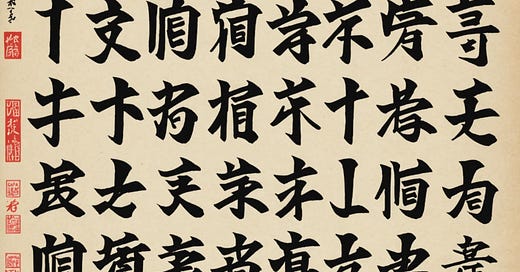YOUR HAIKU IS NOT A HAIKU
A guide for people who think counting syllables makes them Japanese poets
Listen syllable-counters: that thing you wrote about your cat sleeping on your keyboard is not a haiku.
It's a mathematical exercise wrapped in delusions of Eastern mysticism. Every time you post one of these thingys with #haiku attached, a centuries-old tradition weeps quietly into its tea ceremony.
You want to know what a real haiku is? It's not your grocery list broken into three lines. It's not your shower thoughts with enforced line breaks. And it's definitely not whatever fever dream you had about pizza rolls at 2 AM.
YOUR HAIKU CRIMES AGAINST NATURE:
1. Treating it like a math problem "Refrigerator / Is empty again today / I should go shopping"
Congratulations! You can count to seventeen! Here's your participation trophy. Now please explain to me how this captures a fleeting moment in nature or achieves any kind of spiritual insight beyond your inability to meal prep.
2. Writing about your feelings like it's your diary "My heart is broken / You left me for my best friend / I hate everything"
This isn't a haiku, it's a therapy session with forced syllable breaks. Traditional haiku masters are spinning in their graves so fast they could power a small village.
3. Missing the entire point of seasonal reference (kigo) Where's your connection to the natural world? Where's the subtle seasonal indicator that grounds your poem in time and place? Oh, you mentioned it's Tuesday? That's not how seasons work.
4. Completely ignoring the cutting word (kireji) Real haiku have a pause, a breath, a moment where the poem pivots and reveals something unexpected. Your haiku reads like someone having a stroke while dictating their to-do list.
5. Making it rhyme because you think that makes it "more poetic" "Cherry blossoms fall / Down upon the garden wall / Spring comes to us all"
NO. Stop it. Stop making haiku rhyme. This isn't Dr. Seuss Goes to Kyoto. Traditional haiku don't rhyme in Japanese, and forcing English haiku to rhyme is like putting ketchup on sushi.
WHAT A REAL HAIKU ACTUALLY DOES:
A proper haiku captures a single moment in nature with such precision that it reveals something universal about existence. It's a snapshot that somehow contains eternity. It juxtaposes two images that create meaning in the space between them.
It's supposed to make you pause and see the world differently, not make you wonder if you should add milk to your grocery list.
HERE'S WHAT TO DO INSTEAD:
Go outside. Look at something. Really look. Notice how the morning light hits the wet pavement. Notice how the crow's call echoes off the buildings. Feel the exact temperature of the wind on your skin.
Then—and this is crucial—don't write about your feelings about it. Write about the thing itself. Let the image do the work. Trust that if you capture the moment precisely enough, the feeling will emerge naturally.
Stop trying to be profound. Profundity happens when you pay attention to the ordinary world with extraordinary precision.
And for the love of all that is sacred in poetry: stop writing haiku about your ex-boyfriend, your diet, or your opinion about pineapple on pizza. These are not subjects that have troubled Japanese poets for the past 400 years.
If you absolutely must write about modern life, at least ground it in the natural world. Even city haiku can capture genuine moments—the way steam rises from manholes on cold mornings, how pigeons navigate between rushing commuters, the exact quality of light filtering through smog.
Remember: Bashō didn't become a master by counting syllables on his fingers. He became a master by walking thousands of miles and paying attention to every dewdrop, every frog, every moment of changing light.
Your turn. Go walk. Look. Listen.
And maybe—just maybe—you'll write something that doesn't make the ghost of Kobayashi Issa want to haunt your comment section.






